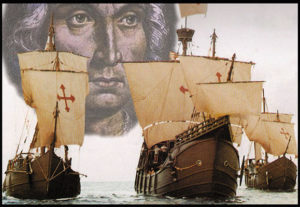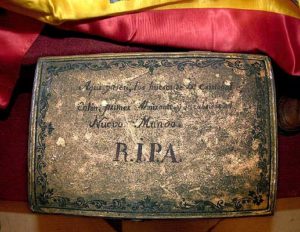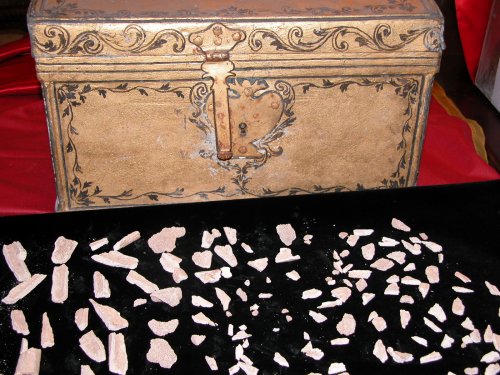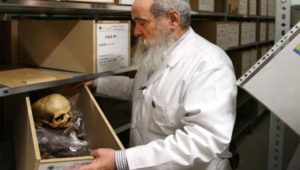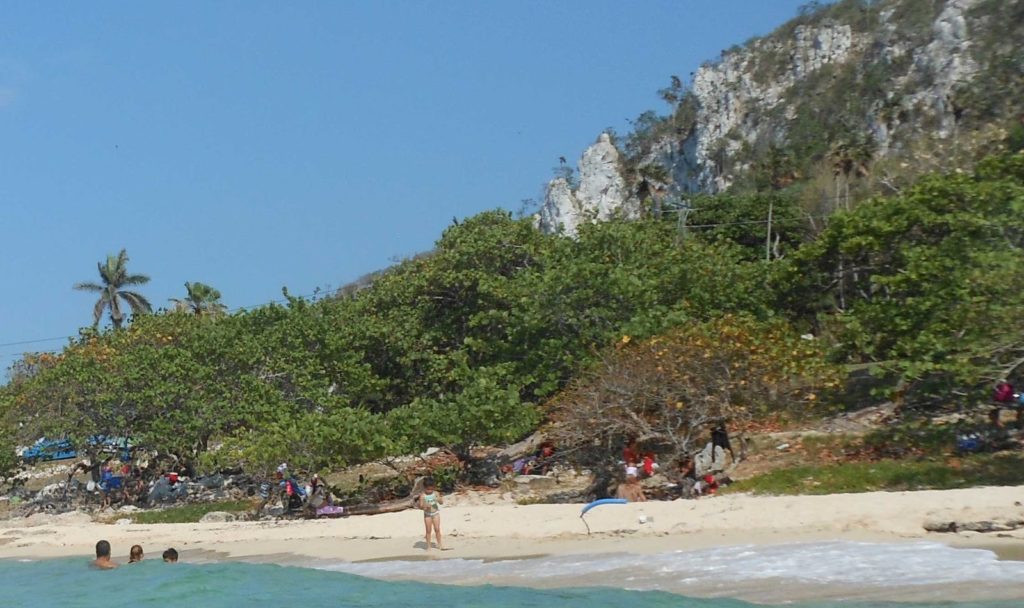In life, the bones of Christopher Columbus had no rest. One day in Lisbon, another in Madeira, a third in Barcelona. And it is said that, while still breathing the air of the living, his bones had to endure even the terrifying colds of frozen Iceland. And I would cross the Mare Tenebrosum, the Atlantic, again and again.
The saying goes: “Genius and figure, until the grave.” And the bones of the Grand Admiral of the Ocean Sea would also find no rest after entering the desolate places of death.
In this story, the cathedral of San Cristobal de La Habana would play a major role.
In misery, forgotten by those crápulas that call “the kings catholic”, Cristóbal Colon dies the 20 of May of 1506, in Valladolid. He is buried in the Convent of San Francisco, of that city.
Later – at an undetermined date, but also of the sixteenth century – the remains are moving again, now towards America, to Hispaniola, and are buried in the cathedral of Santo Domingo.
The crown gives orders to save the ashes of the Grand Admiral. So that the Spanish naval ship San Lorenzo, under the command of Tomás de Ugarte, docks in the Cuban capital on January 5, 1796 carrying some remains that, from that moment, will begin their history in Havana.
When they rest the remains in a niche of the Havana cathedral, anyone would have thought that in the future they would enjoy eternal rest. But there was no such thing.
On the morning of September 26, 1898, the cathedral and the streets leading to it are taken militarily. The Spanish empire has collapsed in its last American redoubts and there will be the exhumation of the famous remains to transport them to the Peninsula.
The captain general, the diocesan bishop, other officials, a history scholar, two medical doctors, a master of works and three workers are present at the ceremony – supposed to be solemn.
After a scrupulous registry of the cathedral, to avoid the presence of strange people, the urn was extracted. That’s when the senior clerk asked:
-What is done with these remains?
“We could take them to the house of the bishop,” said the captain general.
But the mitered returned angrily:
“And … why do not you take them to yours?” That’s not going to my house!
They finally agreed that if the ashes had rested for 102 years in the cathedral, they could stay there until the final moment of boarding.
And they all sighed with relief when, on December 13, the Conquest of Venadito sailed from the Havana port to Cadiz, from where the macabre cargo would be taken to the Cathedral of Seville.
Today, respectable researchers say that Colon’s bones were never in Havana. They assure that in the disbandment that formed when they left Santo Domingo they confused them with those of some of their relatives there buried.
LOS DESPOJOS DEL GRAN ALMIRANTE CRISTOBAL COLÓN.
En vida, los huesos de Cristóbal Colón no tuvieron descanso. Un día en Lisboa, otro en Madeira, un tercero en Barcelona. Y se dice que, cuando aún respiraba el aire de los vivos, su osamenta tuvo que soportar hasta los fríos terroríficos de la congelada Islandia. Y cruzaría el Mare Tenebrosum, el Atlántico, repetidas veces.
Ya lo dictamina el refrán: “Genio y figura, hasta la sepultura”. Y los huesos del Gran Almirante de la Mar Océana tampoco hallarían reposo tras ingresar en los desolados parajes de la muerte.
En esa historia, desempeñaría papel principalísimo la catedral de San Cristóbal de La Habana.
En la miseria, olvidado por esos crápulas que llaman “los reyes católicos”, Cristóbal Colón fallece el 20 de mayo de 1506, en Valladolid. Es inhumado en el Convento de San Francisco, de esa ciudad.
Más tarde —en fecha no determinada, pero también del siglo XVI— los restos vuelven a moverse, ahora hacia América, a La Española, y son enterrados en la catedral de Santo Domingo.
La corona da órdenes de poner a salvo las cenizas del Gran Almirante. De manera que el navío de guerra español San Lorenzo, bajo el mando de Tomás de Ugarte, atraca en la capital cubana el 5 de enero de 1796 transportando unos despojos que, a partir de ese momento, comenzarán su historia habanera.
Cuando quedan reposando los restos en un nicho de la catedral habanera, cualquiera hubiera pensado que en lo adelante disfrutarían de eterno descanso. Pero no hubo tal.
En la mañana del 26 de septiembre de 1898 están tomadas militarmente la catedral y las calles que a ella conducen. El imperio español se ha desmoronado en sus últimos reductos americanos y va a producirse la exhumación de los famosos restos para transportarlos a la Península.
Están presentes en la ceremonia —que se suponía iba a ser solemne— el capitán general, el obispo diocesano, otros funcionarios, un académico de Historia, dos doctores en Medicina, un maestro de obras y tres obreros.
Después de un escrupuloso registro de la catedral, para evitar la presencia de personas extrañas, se procedió a la extracción de la urna. Fue entonces cuando el escribano mayor preguntó:
—¿Qué se hace con estos restos?
—Podríamos llevarlos para la casa del señor obispo” —propuso el capitán general.
Pero el mitrado ripostó iracundo:
—Y… ¿por qué no se los llevan para la suya? ¡A mi casa no va eso!.
Finalmente estuvieron de acuerdo en que, si las cenizas habían reposado durante 102 años en la catedral, allí se podían quedar hasta el momento final del embarque.
Y todos suspiraron aliviados cuando, el 13 de diciembre, partió del puerto habanero el crucero Conde de Venadito, hacia Cádiz, de donde la macabra carga sería llevada a la catedral de Sevilla.
Hoy respetables investigadores sostienen que los huesos de Colón nunca estuvieron en La Habana. Aseguran que en la desbandada que se formó a la hora de abandonar Santo Domingo los confundieron con los de alguno de sus parientes allí inhumados.
Agencies/Flashazos/Argelio Santiesteban/Extractos/Internet Photos/ Arnoldo Varona/ TheCubanhistory.com
THE CUBAN HISTORY, HOLLYWOOD.



